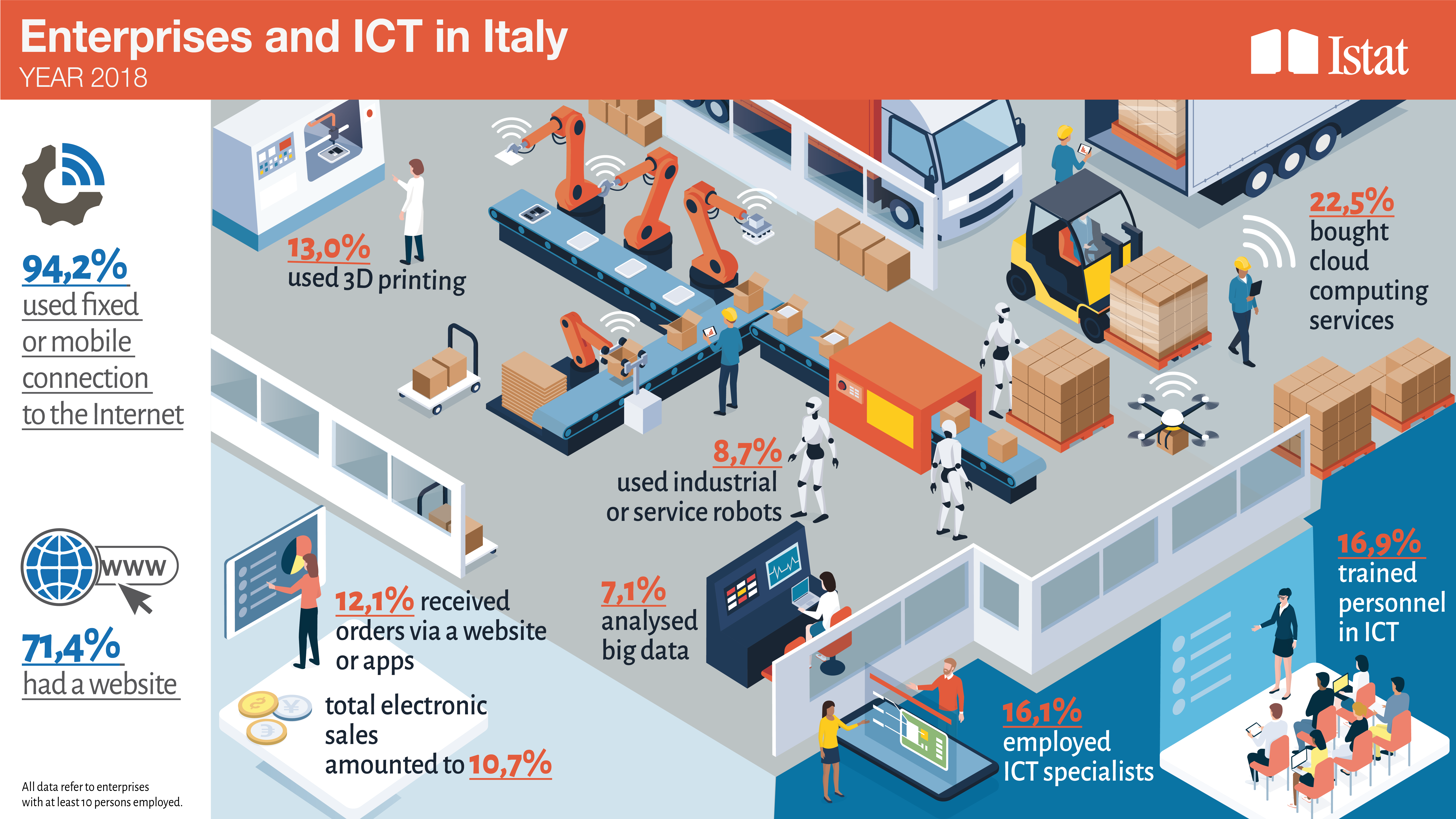Press release
- Home
- /
- Press release
- /
- Citizens, enterprises and Ict
Citizens, enterprises and Ict
In 2018, ICT technologies were the more and more widespread throughout Italy, even though a significant gap persisted compared with other EU countries, both for enterprises and citizens.
In 2018, households accessing the Internet through broadband connections rose to 73.7% (up from 70.2% in 2017).
Almost all the enterprises with at least 10 persons employed (94.2%) used mobile or fixed broadband connections. Enterprises with download speed of Internet connection of at least 30 Mbit/s increased significantly (from 22.1% in 2017 to 29% in 2018).
During the last 12 months, 68.5% of people aged 6 and more were connected to the Web (65.3% in 2017), and more than half (52.1%) surfed the internet every day.
People aged 15-24 showed the highest level of internet use (94%), and in fact age continued to be the main discriminating factor. However, people aged 65-74 reached 39.3% from 30.8%.
Among people aged 14 and over, the Smartphone was the most used device for accessing the Internet (89.2%), followed by Desktop computer (45.4%). Quite used also laptops or netbooks (28.3%), tablets 26.1%, less used other mobile devices such as ebook and smart watch (6.7%).
Companies investing in digital were increasing and the share providing ICT training for the personnel went up from 12.9% to 16.9%.
Among people aged 16-74 using the internet in the last 3 months, 20.2% wanted to arrange an accommodation through dedicated websites or apps (such as AIRBNB). Moreover, almost one third published its own generated web content.
The use of intermediaries for eCommerce significantly increased: companies selling via web (64.1% in 2017, up from 53.8% in 2016), used at least one e-marketplace and 50.2% (up from 39.1% in 2016) achieved at least half of the web turnover through those intermediaries.
Internet shoppers rose from 53% in 2017 to 55.9% in 2018; among non-internet shoppers over the last 3 months, 43.9% searched on the internet for information, goods or services to buy.
The level of digitalization was meaningfully different between large and small enterprises. According to the Digital intensity indicator, High levels of digitalisation (“High” or “Very high”) were reached by 44.0% of companies with at least 250 persons employed and by 12.2% of companies with 10 to 49 persons employed.
Large Italian companies showed a higher propensity in using emerging technologies or within the general European average. More in detail, 30% analysed big data (25% in Eu28); 13% used 3D printers (as in Eu28) and 26% robotics (25% in EU28).
In 2016-2017 less than three companies out of 10 made technological investments or intended to invest in 2018-2019. Nevertheless, IT security, web applications and cloud computing were indicated as companies’ business priorities in ICT.
A share of the businesses with at least 10 persons employed (22.4%) considered the development of employed human resources’ technological capabilities one of the three main competitive factors for 2018-2019, along with public facilities (48.5%) and access to ultra-broadband infrastructures and connections (30.8%).

